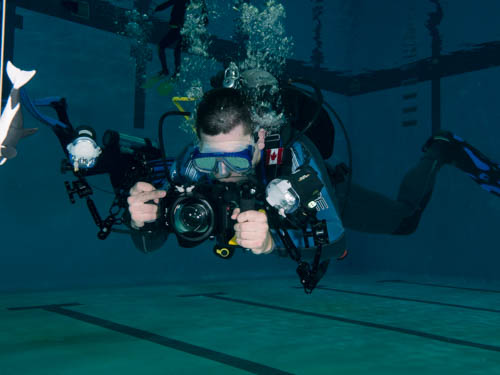Buoyancy Control: The key to good diving
Every diver no matter the experience or training level needs to focus on their buoyancy. Buoyancy control does not just mean that you don't hit the bottom or that you can ascend without getting a warning from your dive computer. Being able to hover on the spot, being able to swim throughout the dive with minimal effort, being able to observe the ocean reef without disturbing anything is buoyancy control. Having proper buoyancy control can make your dives more enjoyable, improve your photos, improve your air consumption, keeps you, your buddy and the marine environment safe.


Steps to improve and maintain your Buoyancy:
1. Take a buoyancy course. During an Open Water dive course there are so many new skills and experiences happening at once that many divers only get a minor grasp on controlling their buoyancy. The Advanced Buoyancy control course is designed to focus solely on this skill giving divers the tools to develop control. Be aware not all buoyancy courses are created equal, we see many divers that learn how to sit cross legged in the water and float but when was the last time you have been scuba diving and had any use for being in a seated position in the water?
2. Be aware. Far too many divers think they are doing just fine when in fact they are not in control. Look down at your fins every now and again or behind you, if you see a dust cloud following you through the water you have a problem. Ask your buddies how you look in the water. Kicking or using your hands to maintain ""neutral" buoyancy is not buoyancy control.
3. Keep a detail logbook. Make a note of improvements and set-backs this can help identify factors that effect your buoyancy. Record everything that effects buoyancy such as: fresh vs. salt water, type and size of tank, thickness of wetsuit, drysuit, type of BCD, etc.
4. Test your weighting. Ideally you should be able to get in the water empty your BCD of air and float at eye level with your lungs full. Check at both the beginning and end of your dive as your tank becomes less negatively buoyant as it empties and in the case of Aluminum tanks it will become positively buoyant when low. Wearing different equipment will change the amount of weight needed, bring a variety of small weights to allow you to adjust. This is something you should be checking on a regular basis even if you have not changed your gear, many divers find as they get more experience and more calm in the water they need less weight.
5. Practice. The best way to get better at anything is to do it over and over. Join a local dive club, check out nearby dive sites, practice in the pool. Try to keep your movements small, the more you wave about with your hands to more you have to correct. Utilize your core muscles to keep in horizontal position. Maintaining a fairly flat horizontal position in the water will allow you to kick forward with less effort.


Recent Posts
-
Scuba Refresher Courses: Why They’re Essential for Every Diver
If you take a look at your scuba certification card, you’ll notice there’s no expiration date. …2025 Apr 7th -
Local Scuba Diving Available During the Summer
Fresh water diving is available all summer and into the fall in various lakes around the province …2024 May 29th -
Top 5 reasons to start Snorkeling
There are so many reasons to go on a nice, warm, tropical vacation during the winter, especially her …2024 Mar 7th




